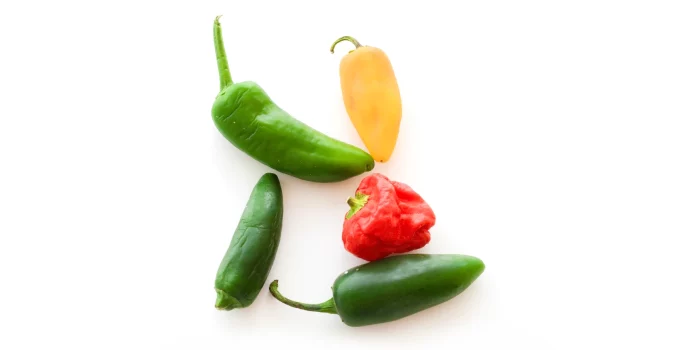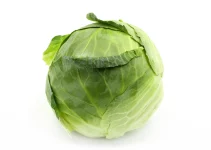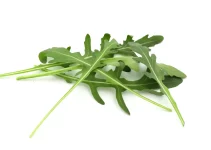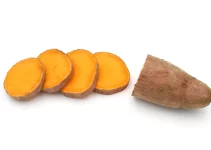If you’re looking for a substitute for jalapeño pepper, you have many options at your disposal. The easiest thing to do is to shop for whatever green chilis you have in your area.
If none of the shops around you sell jalapeños either fresh or pickled/canned, then buy whatever green chilis they might sell. Test to see how hot they are so that you won’t make your dishes spicier than you can handle. That’s the best advice that I can offer you in regards to buying a substitute for jalapeño pepper.
If none of the chilis work for you, just use chili flakes, chili powder or a hot sauce. If you care only about bringing heat to a dish and not about the texture of the green chilis, then you can also use these three as substitutes for jalapeño peppers.
There are many options to choose from if you’re looking for a substitute for jalapeño pepper. I think this is one of the easiest substitutes to find and in this article we’re going to cover a variety of chili varieties.
It’s much easier to find replacements for chilies/peppers than it is to find substitutes for carrots or sweet potatoes or cabbage or leeks, etc.
Table of Contents
Some of the best substitutes for jalapeño peppers include:
- other green chili varieties that are sold in your area as fresh peppers or as pickled peppers
- pickled jalapeños
- bell peppers or banana peppers for no-heat substitutes
- serrano chilis for similar taste and appearance – serrano peppers are on of the best substitutes for jalapeño peppers due to their similar taste but they are about 5 times spicier than a jalapeño
- or Fresno peppers for a variety with similar numbers on the Scoville scale, about the same spiciness
- cayenne if you want a chili variety that can be 10 times spicier than a jalapeño
- poblano peppers for their meatiness, being similar to bell peppers but with a bit of a kick, which makes them perfect
- cubanelle for barely any heat and delicious sweetness, a version of a slimmer bell pepper
- chili flakes/red pepper flakes/crushed pepper/red pepper powder
- hot sauces
- hot paprika
- smoked paprika
14 Substitutes for Jalapeño Peppers
I find jalapeños to be not only absolutely delicious, quite sweet and fragrant, but I also think that these green chilies have the perfect amount of heat.
I can’t eat something really spicy in big quantities but I can handle this variety just fine. In terms of heat, these suit me the most out of everything that I’ve tried until now.
Jalapeño measures 2,500-8,000 SHU on the Scoville scale. As you can see, they’re definitely moderately spicy.
The average is 5,000 SHU and that’s exactly where I like them for a meal with a nice kick that always makes me want to eat more and more, to experience some more of that heat.
When it comes to other chili varieties, some are going to be a lot less spicy, while others will be higher up on the Scoville scale. We’ll definitely talk about some of those as substitutes.
However, I’ll also try finding a substitute for jalapeño pepper that will be in the same range on the Scoville scale.
1. Pickled jalapeños
If you can’t find them fresh, you can buy them pickled. I like them pickled as well but I still prefer to buy them fresh whenever I can.
But I have the habit of having at least 2 jars of pickled jalapeños in the pantry to use as a substitute for jalapeño pepper and for other chili varieties.
If you want to make the substitution, you can use these measurements: 1 medium jalapeño pepper equals one nicely packed tablespoon of pickled sliced jalapeños.
However, you don’t have to follow a recipe to a T. You can use as much or as little as you’d like, depending on the amount of heat you like with your food.
The pickled ones really fit most recipes, they’re very convenient, although I think they’re also a bit expensive.
However, you must take into account that they will bring a bit of acidity into a recipe. They also have a softer texture than the fresh ones, which have a nice, crispy texture.
Still, for sandwiches and burgers and things like that, they work really well. You can also add them to tacos, quesadillas, salsa, guacamole, and many other mouthwatering Mexican dishes.
Moreover, you can use the leftover vinegar for salad dressings. It will add a kick.
The only thing you can’t use them for is if you want roasted peppers. I love adding a few jalapeños to my oven roasted vegetables. In the oven, they lose a bit of their heat but they become so much sweeter.
Roasted chilies are really one of the best things on the planet. I recommend making nam prik noom (Thai pounded roasted chili dip) and you’ll become addicted after the first bite.
2. Serrano chilis (substitute for jalapeño with similar taste, a lot more heat)
If you’re looking for substituting jalapeños with a variety that matches their taste very closely, then you should look for serrano peppers.
They also look quite similar.
The difference is that jalapeños are quite meaty, they have thick walls and I absolutely love that about them because we get to eat more. Serranos are a bit thinner and they grow a bit smaller.
Many people use these 2 interchangeably due to their similar flavors. The slight difference in flavors is that serrano tastes a bit more grassy, just like some green bell peppers taste a bit more grassy than their red counterparts.
Where the 2 chili varieties really differ is in heat.
To give you a clear idea, I should say that serrano can be about 5 times spicier than a jalapeño.
They measure 10,000-20,000 SHU on the Scoville Scale. That’s quite the difference. I wouldn’t consider them moderately hot.
Therefore, those who use these 2 interchangeably are those who can handle more than medium heat without any problems.
Or you could use 5 times less but what’s the fun in that? You won’t taste that sweet chili flavor at all.
3. Fresno peppers (substitute for jalapeño with similar heat)
We’ve talked about the substitute that comes very close in flavor. Now, let’s talk about the substitute that nearly packs the same heat.
Fresno measures 2,500 to 10,000 Scoville Heat Units. On the other hand, jalapeño tops at 8,000 SHU but its lower levels are also at 2,500 SHU. As I’ve said, they’re pretty closely matched and their average SHU is pretty much the same at 5,000 SHU.
These 2 have some differences in their appearance. Even so, since they’re the same size, many people tend to call Fresno the red jalapeño.
Fresno is harvested when it’s red, while jalapeño is harvested when it’s dark green. Left on the vine, it will also turn red as it ripens.
Fresno also tapers towards the end, forming a triangle, just like the Poblano but in the smaller, red version.
They’re perfect for dips, salsas, ceviche, with rice and beans.
They’re also regularly used for hot sauces because they have an awesome flavor, a fruitier taste than some of the other chili varieties, including the jalapeño.
If you enjoy making your own chili powder, I definitely recommend dehydrating some of these and grinding them into a powder.
They can also be used for making chili flakes.
4. Cayenne pepper (hot)
When people mention cayenne pepper as a substitute for jalapeño pepper, they’re talking about a variety that is considerably more spicy. You must keep that in mind if you’re picking this variety to cook with instead.
Cayenne scores 30,000 – 50,000 Scoville Heat Units on the Scoville Scale.
The average jalapeño scores 5,00o SHU. That’s a big difference between the two varieties. The hottest cayenne is about 10 times hotter than the average jalapeño.
Cayenne is even a bit hotter than serrano. Due to that, I would use cayenne as a substitute for jalapeño pepper with a bit more care.
If the recipe calls for 3 jalapeño, we could only use one cayenne at most. And even that could be a bit too much if we can’t handle our heat.
In the end, when we’re substituting chilis, no matter which variety they are, we must first think about their heat levels. Taste falls to second place because how much flavor can you really discern when your mouth’s on fire?
Cayenne peppers is a thin chili pepper, green to red in color, about 2 to 5 inches long.
Thus, they’re not as meaty as a jalapeño. That’s another thing they don’t have in common.
In terms of taste, cayenne is hot and a little fruity. That’s about it. Well, that could be the description for many other chili varieties.
5. Poblano (mild)
This one looks more like a longer, pointier bell pepper than a chili.
It also tastes very similar to a bell pepper so you can use the 2 varieties interchangeably.
However, it packs a bit of heat. I can definitely see it as an awesome substitute for jalapeño. One of the best, actually.
Poblano measures 1,500 to 4,000 SHU on the Scoville Scale. It almost gets close to the heat of an average jalapeño.
It’s more tame but I think it’s awesome. And the size of a poblano is the equivalent of at least 3 jalapeños.
6. Cubanelle (low heat, perfect peppers for stuffing)
These are even less hot than poblano peppers.
They score about 100 – 1,000 SHU on the Scoville Scale. Cubanelle, Anaheim and banana peppers can be used interchangeably.
Moreover, cubanelle can also be used as a very good alternative to bell peppers because they’re mild.
They even look like a narrower bell pepper. I love their light green color and their meatiness, size and shape.
It makes them perfect for stuffing. If you want to cook stuffed peppers with just a bit of heat, I recommend trying cubanelle.
The only problem is that I don’t know how many people can find to buy them.
Their sweet taste is their main selling point. If you can grow a few cubanelle plants, I recommend you do it so that you can see how delicious they are.
7. Anaheim (mild)
Known as the California chili, Anaheim can also be found canned under the label green chilies.
It’s quite mild, ranking only from 500 to 2,500 SHU on the Scoville Scale. The average is 1,500 SHU.
They’re green, long and meaty.
They actually grow up to 7 inches in length, which is quite a difference, considering that jalapeño grows about 3 inches long.
But you can use as many anaheim as you want because they barely pack any considerable heat.
That’s why, if you can’t find banana peppers, definitely get anaheim.
The only thing you should be aware of is their mild taste but that can be a good thing because you can use more and make a delicious recipe, no matter what you’re cooking.
8. Green bell peppers (no heat)
If you want a substitute for jalapeño pepper with no heat, 0-100 SHU, then look no further than the common green bell peppers.
They’re a lot easier to find, no matter where you live. If you can’t find the green variety, get the orange, red or yellow. Unless the recipe calls specifically for green peppers, like it is the case with green Thai curry.
One medium bell pepper is the equivalent of at least 5 jalapeños. But you can use as much as you want because they have no heat at all.
9. Banana peppers (barely any heat)
These are called like that because they’re usually harvested when they’re yellow. The difference in color is a major difference between banana peppers and jalapeños.
So is the difference in heat, meaning that banana peppers barely pack any, measuring 100 to 500 SHU on the Scoville scale.
It’s at least 5 times milder than the mildest jalapeño, which can be awesome for some people.
10. Chili flakes
I am well aware that chili flakes don’t have much in common with fresh peppers.
However, if you absolutely can’t find any fresh chili of any kind, you can use a combination of two ingredients as a substitute for jalapeño pepper: green pepper with a dash of chili flakes added for heat.
That’s a nice combination for those who want both the taste of fresh peppers and as much heat as they can take.
11. Hot sauces (jalapeño hot sauce)
Hot sauces can be used for adding heat to a dish and also as a condiment on fried eggs, scrambled eggs, tacos, in stir-fries, etc.
They’re also added to barbecue sauces or to add depth to soups and stews.
If you want the perfect hot sauce as a substitute for jalapeño pepper, get a jalapeño hot sauce, which will compliment the rest of the ingredients without overpowering them.
12. Hot paprika
Obviously, when using hot paprika we won’t get the texture that we get when we use chili peppers in our recipes. It’s the same for hot sauces and chili flakes.
What we get is making the dish spicy.
When we use hot paprika we also add flavor to the dish. These powders are made from spicy and sweet peppers that are dried and ground into a fine chili powder.
The taste of hot paprika is fruity and a little bitter. I absolutely love it.
Whenever I make a spice mix, I add hot paprika. I also add smoked paprika so let’s see what that is.
13. Smoked paprika
Smoked paprika is made from smoke-dried chili peppers. The chilis were dried over an oak fire, then ground into a fine powder.
That’s what makes smoked paprika so absolutely delicious. It’s frequently used for making spice mixes but it’s also used on its own in heavy dishes, like baked beans.
If you like a bit of a smoky flavor in your dishes, you need to try smoked paprika.
14. Pepperoncini
We usually find pickled pepperoncini to buy so they’re a perfect substitute in recipes that call for pickled jalapeño peppers.
However, what you need to know is that pepperoncini are about as hot as a banana pepper, which is basically inexistent heat.
If you want some heat, I recommend adding a few drops of hot sauce or a sprinkle of chili flakes.
Popular recipes with jalapeño peppers
Let’s see how we can use a substitute for jalapeño pepper in some of the most popular recipes that call for this ingredient.
Bacon jalapeño poppers
Is there anyone who hasn’t heard of bacon jalapeño poppers? Well even if you don’t have the pepper in question, you can use many of the above substitutes.
First of all, you can buy any green chilis that are sold where you live and then stuff them with cream cheese and cheese and then wrap them in bacon.
If you can the people you’re cooking for can handle a good dose of heat, you can use cayenne.
Fresno peppers are another wonderful substitute and they have a similar heat level.
However, if you a very mild variety, I recommend cubanelle. They’re absolutely delicious and bacon wrapped stuffed cubanelle peppers are a perfect substitute for bacon jalapeño poppers.
Jalapeño Swiss burgers
This burger recipe will call for pickled jalapeño. My recommendation is to use whatever pickled chili peppers you can find to buy.
If what you find is a pickled variety that’s not at all spicy, like pepperoncini, then add chili flakes or hot sauce to bring up the heat.
If you don’t have any pickled chilis, just add pickled cucumbers for that vinegary taste.
Hot sauces are also made with vinegar so they can also add a bit of sourness to a recipe.
Sweet ‘n’ Tangy chicken wings
Once again, you can use whatever chili variety you can find in your area as a substitute for jalapeño pepper but you can also use smoked paprika, hot sauces, hot paprika or chili flakes.




